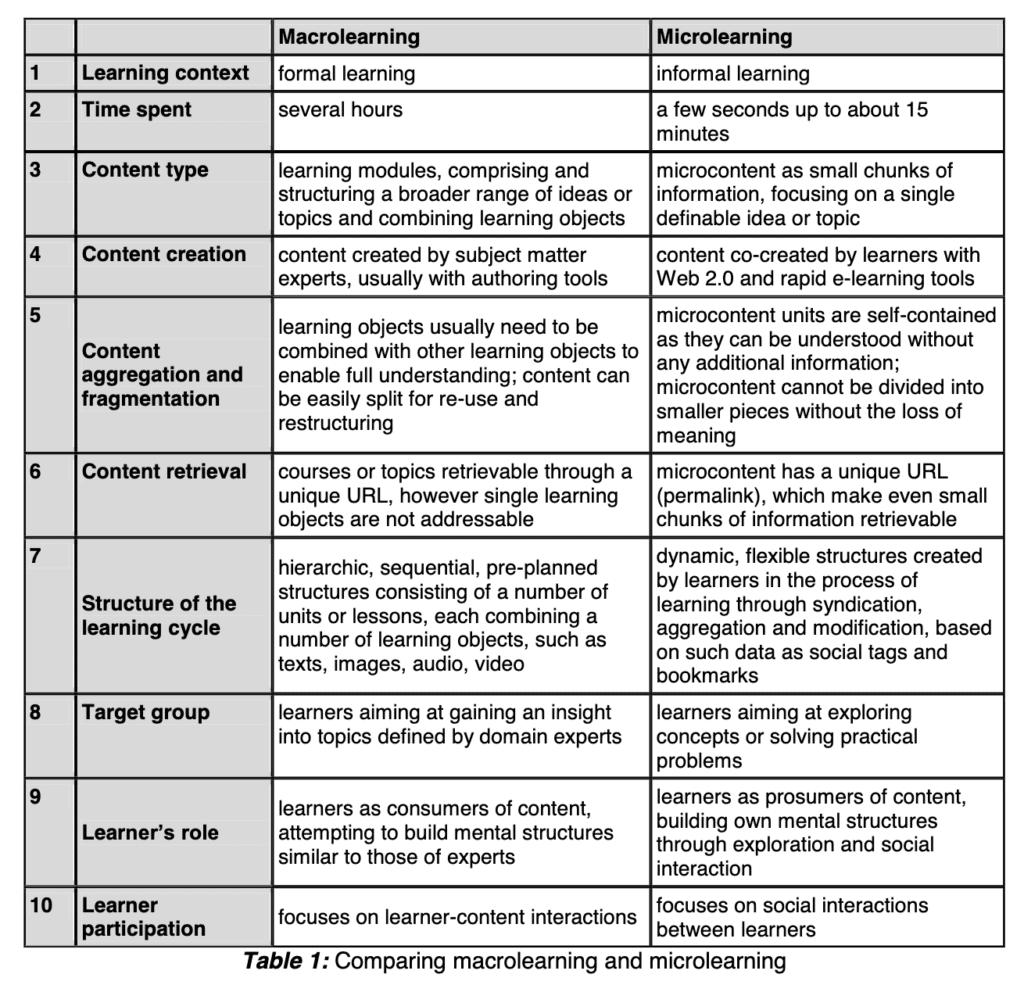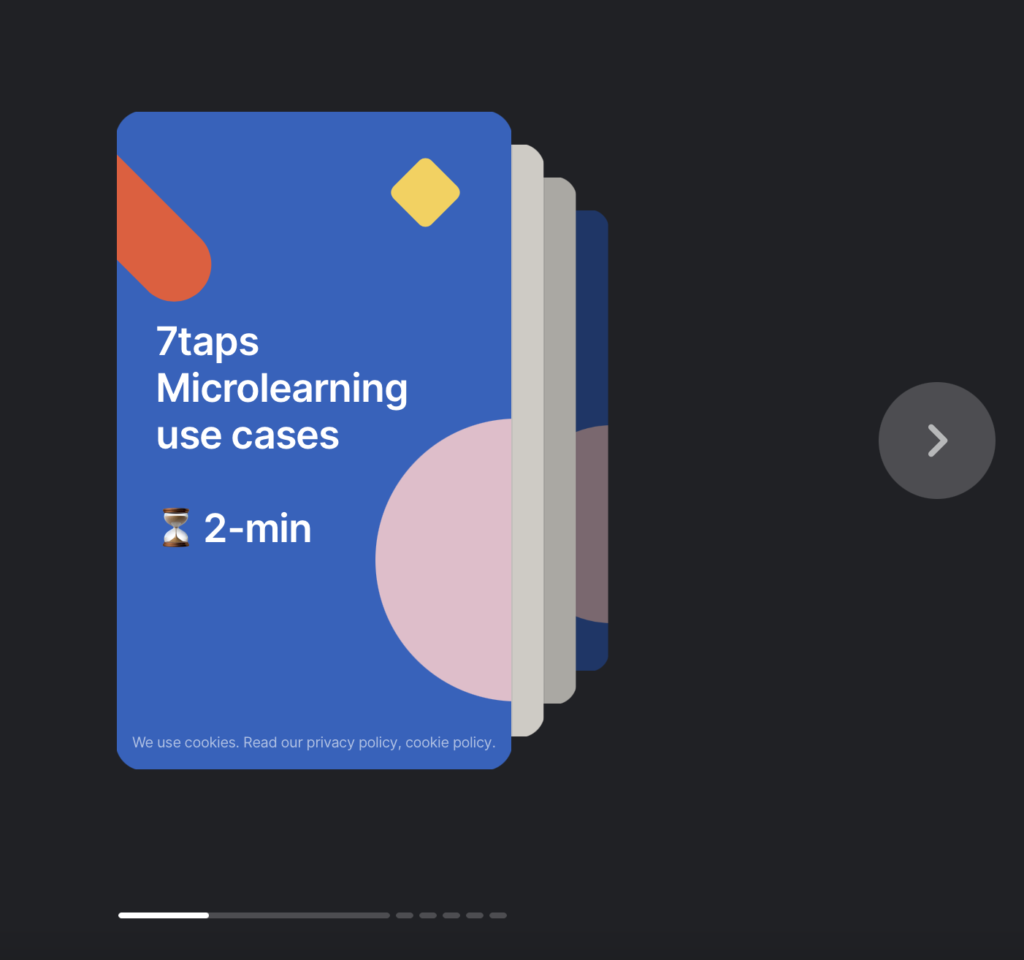Even though it started bubbling up years ago, microlearning still represents one of the biggest current trends and opportunities in the market for adult professional development and continuing education.
For adult lifelong learners, microlearning represents a way to acquire specific new skills and knowledge in a concise, targeted way. For businesses, it is potentially a more efficient and effective way to ensure employees get the right training and education at the right time. (And, while we won’t cover it in this post, it can be a very compelling way for engaging with customers, suppliers, channel partners and other stakeholders.)
At this point—to follow an approach to trends offered in Blue Ocean Strategy—microlearning is decisive, irreversible, and offers a clear trajectory for most learning businesses. So, in this post, we’ll take a look at just how microlearning applies to professional development, continuing education, and the general business of lifelong learning.
What Microlearning Is—and Isn’t
While most discussions of microlearning emphasize that it requires less time than traditional approaches, brevity really should not be the primary focus. As Diane Elkins argues, the real focus should be on achieving specific, small learning goals, not just shortening the length of the learning experience.
Still, there is no denying that time is a factor, and the potential for brevity is one of the main reasons microlearning has gained such a foothold.
In contrast to traditional education and training experiences, which tend to be designed in 50, 75, or 90 minute units, microlearning experiences may last anywhere from a few seconds—the time it might take to answer a quiz question, for example—to roughly 15 to 20 minutes—the time it might take to watch a video, for example.
But they also may be longer. In the end, we might define microlearning by saying that:
- Microlearning is an approach to learning that focuses on achieving a small number of learning objectives—often only one—in as concise a manner as instructionally effective.
While microlearning does not necessarily imply online learning—pecha kucha, for example, might be considered a form of microlearning—Internet and mobile technologies have certainly made creating and accessing these types of experiences dramatically easier. The explosion of smart phone and tablet usage have set the stage for microlearning to become a major force.
The following table from “Microlearning: a strategy for ongoing professional development” suggests some of the key differences between microlearning and more traditional “macrolearning.”

Some Recommended Readings
A lot has been written about microlearning at this point. While very little of it has focused specifically on leveraging it for professional development and. continuing education, I recommend the following as resources for anyone interested in using it specifically from that angle.
- With Microlearning, Focus on Small Goals—Not Small Courses. Already mentioned above.
- Microlearning: A strategy for ongoing professional development. Also mentioned above. In spite of being published in 2010—which would be 1950 in Internet years—this article provides a very useful overview of microlearning.
- As Corporate World Moves Toward Curated ‘Microlearning,’ Higher Ed Must Adapt. While focused on higher education, sets the stage well for the shift that is occurring.
- How Microlearning Will Shape the Future of Work. First part of a good three-part series.
- Learning in Bursts: Microlearning with Social Media. While focused more on younger students, like the emphasis on the role of social media.
- Macro to Micro-learning: How to Transform Your Course Library. Some useful tips on how to extract micro experiences from your current portfolio. This may be the microlearning move that makes the most sense for many learning businesses.
- 7taps Microlearning CONF conference resources and recordings. This conference brings together some of the greatest names in L&D to share microlearning wisdom.
Microlearning for Professional Development Examples
- 10 Minute CPE: A number of state Certified Professional Accountant societies have gotten approval to offer continuing professional education (CPE) units in 10 minute increments. To learn more, check our our interview with Josh Goldman, who talks about the microlearning efforts at the Ohio Society of CPAs.
- MOCA Minute: MOCA Minute® is an interactive learning tool the American Board of Anesthesiology began piloting in 2014 to help diplomates prepare for the MOCA exam. It consists of multiple-choice questions like those typically presented on MOCA exams. Be sure also to listen to our interview with Dr. Deborah Culley of MOCA.
- ASHA Microcourses: The American Speech-Language Hearing Association has introduced a range of microcourses. Be sure also to listen to A Practical Approach to Microlearning with Jack Coursen of ASHA.
- 20-Minute Mentors: 20-minute videos by Magna Publications designed to answer specific questions related to teaching and learning.
- Google Whisper Courses: An example to make it clear that microlearning is not just about video. Even lowly e-mail can play a powerful role!
(More to come—and if you have other examples, please send them!)
Tools to Consider
Microlearning does not necessarily require fancy new technology. Many organizations already have access to some of the most common tools—e.g., a video camera and/or screen capture software, an account with YouTube or another video hosting provider, and social tools like Twitter or a listserv for distributing links and providing interaction.
Whether you need to move beyond relatively common, basic tools depends to a large extent on how much control you need over the way microlearning experiences are distributed and what you need to track.
If you do need relatively significant control, then you may need a learning management system (LMS). Given that so much content is delivered over mobile devices, you will want to make sure that any LMS you considered is truly mobile capable – meaning the LMS environment and navigation adapt to small screens, and learner activity can be tracked to the same degree that it would with laptop or desktop usage. You may also want to determine whether the LMS provider has implemented or plans to implement the Tin Can API, as suggested in this eLearningIndustry article on tracking microlearning.
As might be expected, companies are beginning to emerge that promote their platforms as supporting microlearning. Examples include Grovo, Axonify, EdApp, and 7taps. In fact, 7taps doesn’t just support microlearning, it is built specifically for it.

Finally, microlearning lends itself very well to “spaced education.” an approach to learning that stresses repetition and reinforcement of learning activities over time. Organizations serious about spaced learning may want to look at specialized platforms offered by companies like MindSetter, MindMarker, and BoosterLearn.
Jeff
See also:


 5 Big Takeaways from Traffic and Conversion 2019
5 Big Takeaways from Traffic and Conversion 2019
Leave a Reply